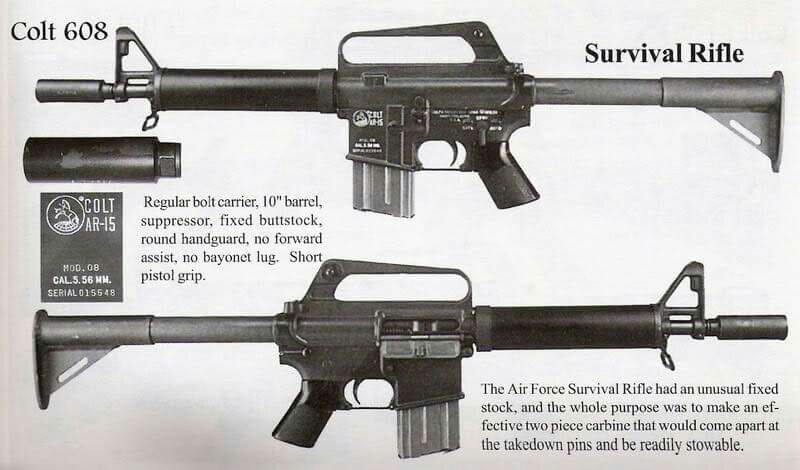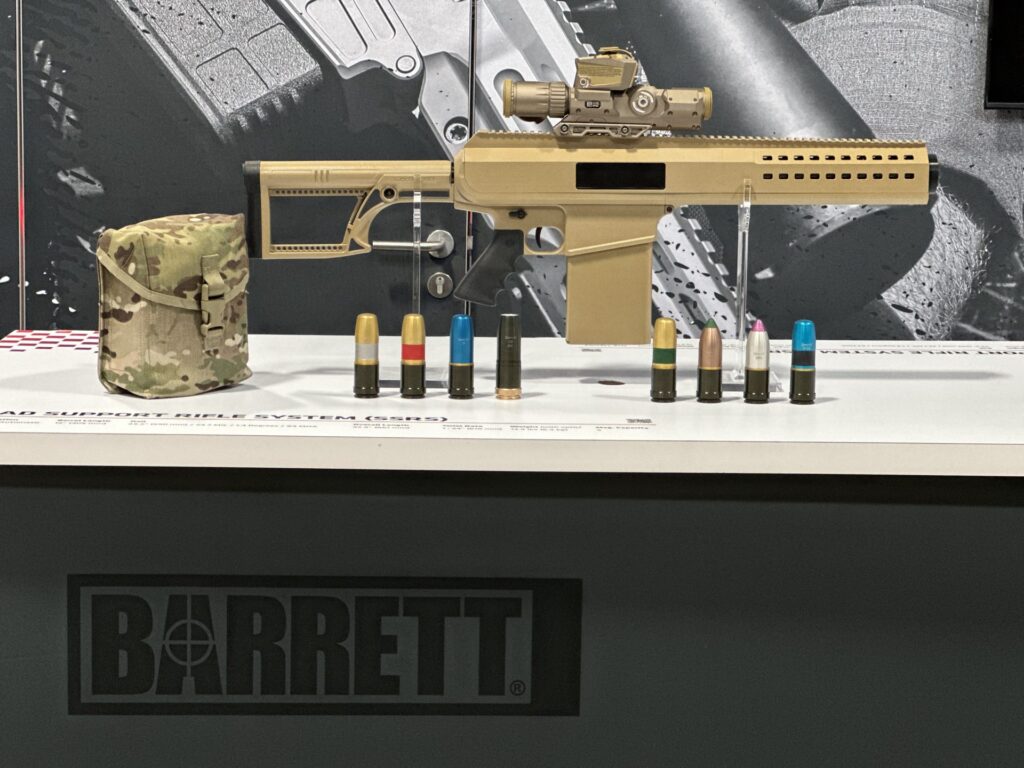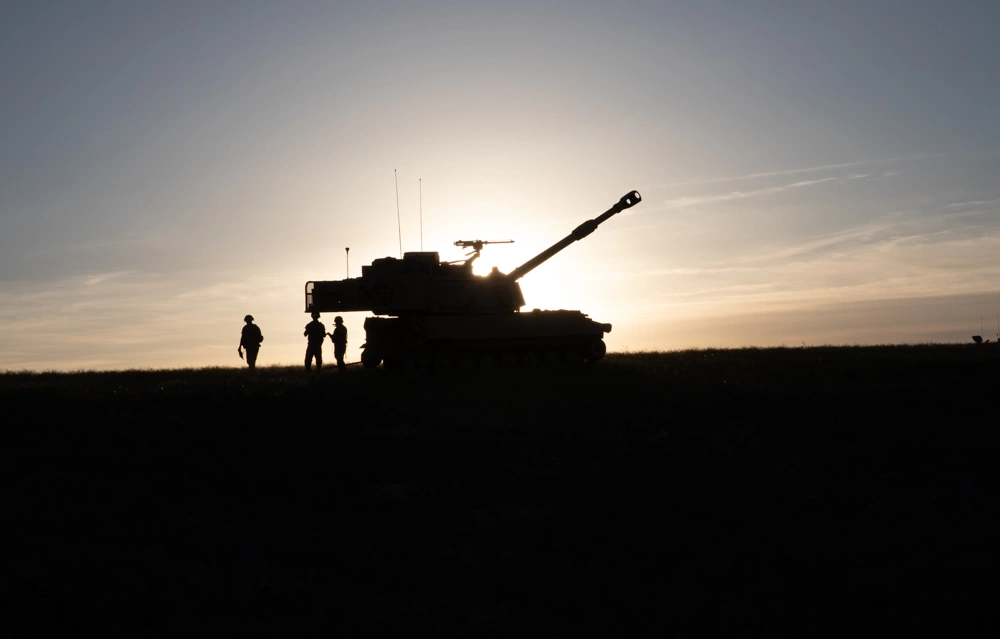These are 5 weird members of the M16 family
- By Travis Pike
Share This Article

The M16 served as the last true rifle for general issue in the United States military. When I say rifle, I mean a true full-sized rifle, not a shorter-barreled carbine like the M4. The M16 has been in service for decades, and along the way, we saw several derivatives, like the M4 mentioned above. Most have been fairly normal, but there are always some oddballs. Today we are looking at five weird members of the M16 Family.
1) Mk 12 Special Purpose Rifle
This looks to be the most normal of all the weird guns in the M16 Family. What makes it weird? Well, the general configuration and layout make it fairly different from the normal M16, and it stands alone in the M16 Family.

The U.S. Navy developed the Mk 12 Special Purpose rifles to act as a 5.56 caliber designated marksman’s rifle and extend the effective range of a 5.56 caliber rifle in the hands of Naval Special Warfare operators.
The Mk 12’s setup makes it different than any other M16 or M4 derivative. The Mk 12 uses an 18-inch free-floated, stainless steel barrel. This barrel helps maximize accuracy and precision shooting capabilities.

The standard M16 of any variety didn’t feature a free-floated, stainless barrel or an 18-inch barrel. They were made to be infantry rifles, but the Mk 12 was made for more precision work.
Navy SEALs and later Marines would make hefty use of the weapon. Our squad carried one in Afghanistan, and having precision fire on call was quite handy. But get ready, because of the weird members of the M16 Family, the Special Purpose Rifle is the most normal.
Related: Should you send your kids to Navy SEAL training?
2) Colt 605
The Colt 605 came out during Vietnam. The M16 used a 20-inch barrel which special operations felt was too long for the thick jungles. The Colt 605 was the first time they trimmed barrel length to begin to create an M16 family of carbines that eventually led to the M4 series.
Colt trimmed the barrel back to 15 inches total. They cut it off right where the front sight post sat. The overall appearance formed a unique design. It was also M16 until you got to the front of the gun, where they chopped the barrel off.

The Colt 605 found its way to Vietnam in limited numbers and served with Special Operations units. However, they only served for a short period as there had some reliability issues due to their shorter barrel cutting dwell time too much.

However, these firearms ran reliably when equipped with a suppressor that didn’t increase dwell time but increased backpressure. The Colt 605 features the same sight radius as an M16, and when it worked it offered extremely soft shooting and was easy to control. Decades later, engineers figured out that they could enlarge the gas port and get the system working. However, by then, carbines like the M4 and CAR 15 existed.
Related: How the Vietnam War changed the Navy SEALs forever
3) M231 Port Firing Weapon
The M2 Bradley fighting vehicle provides a force multiplier in numerous scenarios, but when things get up close and personal, fighting’s tough. In modern urban environments, threats can pop up at any time at extremely close ranges, closer than the main gun can engage. So, we have a weird and short member of the M16 Family for that role, the M231 Port Firing Weapon.

These rifles lacked stocks and sights and fulfilled a very niche role. They were locked into the weapon’s firing ports and could provide extreme close-quarter protection to the vehicle.
Without sights, it’s tough to aim, but crew members were supposed to use tracers only. They could use an aiming port to direct bright red tracers exactly where they wanted them. The weapon fired from the open bolt only and had a cyclic rate of about 1,200 rounds per minute. That’s an insane cyclic rate, and the gunner would need to keep a pile of magazines handy. Since the gun locked into the port, it was easy to control from a recoil and muzzle-rise perspective.

This is the only weapon in the M16 Family to fire from the open bolt that’s been adopted by the United States military. According to most sources, early prototypes included wire stocks that were eventually ditched. However, photos from Iraq clearly show the wire stock still in use which allowed the weapon to be used outside the Bradley.
4) Colt 608 Survival Rifle
It’s a pretty bad day when a pilot has to eject from their plane. In World War II, ejecting from the plane just became part of a pilot’s life. It happened quite often, and the pilot often landed in places hazardous to their general well-being. It’s nice to be armed in such an event, and it’s really nice to have a rifle over a handgun.

So, coming into the 1960s, Colt developed the 608 Survival rifle to address these concerns. Who wants a handgun when a rifle can do the trick? Colt began trimming and cutting their M16 to make what was at the time the smallest weapon in the M16 family.
The Colt 608 Survival rifle featured a short 10-inch barrel with a big conical flash hider. Colt cut the grip in half and trimmed the stock to this small metal thing that was super compact.

Colt engineers designed it to fit into a compartment under the seat, and when ejection occurred, the pilot took the gun with them. Not only did it provide a good rifle for offensive and defensive use, but a pilot could hunt and survive if necessary. Sadly, the Colt 608 wasn’t adopted, and our Aviator Survival Carbine never came to be.
Related: The GAU-5A – Why Air Force’s mini rifle works
5) Colt RO633 DOE SMG
Let me introduce you to the tiniest of the M16 Family, the Colt RO633. This micro SMG took an interesting route. Unlike the actual M16, the DOE SMG utilizes a straight-blowback system popular with SMGs of the time. The gun used 9mm and fed from Colt SMG magazines. Colt built the weapon explicitly for the Department of Energy’s nuke guards.

These guys were tasked with protecting America’s nuclear interests and carried WWII-era submachine guns. The Colt RO633 modernized and lightened their load. The RO633 wears a seven-inch barrel and has an adjustable stock. Its length was only 21 inches, and the gun weighed only 5.6 pounds.
The little 9mm had a folding front sight and a fairly standard rear carry sight setup. It’s simple but effective and gave the DOE guards a short and handy weapon, especially when transporting nukes via convoy. The little gun would be easy to use inside and outside of vehicles.

The DOE SMG served for some years, but as short rifle caliber carbines became en vogue, the Colt SMG faded away. Why use a 9mm SMG when you can wield an M4 carbine in 5.56? It’s a shame, though as the DOE SMG sure gets points for style.
The M16 family
At this point, the M16 family hosts dozens of configurations and components adopted by the United States military. It’s insane how modular and effective the platform is.
These are just some of the weirder versions of the gun, but weird doesn’t mean ineffective. Sometimes it just means niche.
Did I miss any weirdos in the M16 Family? If so, drop them below.
Read more from Sandboxx News
Related Posts
Sandboxx News Merch
-

‘AirPower’ Classic Hoodie
$46.00 – $48.00 Select options This product has multiple variants. The options may be chosen on the product page -

‘Sandboxx News’ Trucker Cap
$27.00 Select options This product has multiple variants. The options may be chosen on the product page -

‘Kinetic Diplomacy’ Bumper Sticker (Black)
$8.00 Add to cart

Travis Pike
Travis Pike is a former Marine Machine gunner who served with 2nd Bn 2nd Marines for 5 years. He deployed in 2009 to Afghanistan and again in 2011 with the 22nd MEU(SOC) during a record-setting 11 months at sea. He’s trained with the Romanian Army, the Spanish Marines, the Emirate Marines, and the Afghan National Army. He serves as an NRA certified pistol instructor and teaches concealed carry classes.
Related to: Gear & Tech

The Switchblade, loitering munitions, and the new terrifying face of warfare

5 ways to prepare and survive the Marine Corps boot camp

Barrett’s Squad Support Rifle System will make infantry squad deadlier

The unique world and uses of howitzers
Sandboxx News
-

‘Sandboxx News’ Trucker Cap
$27.00 Select options This product has multiple variants. The options may be chosen on the product page -

‘AirPower’ Classic Hoodie
$46.00 – $48.00 Select options This product has multiple variants. The options may be chosen on the product page -

‘AirPower’ Golf Rope Hat
$31.00 Select options This product has multiple variants. The options may be chosen on the product page -

‘Sandboxx News’ Dad Hat
$27.00 Select options This product has multiple variants. The options may be chosen on the product page
